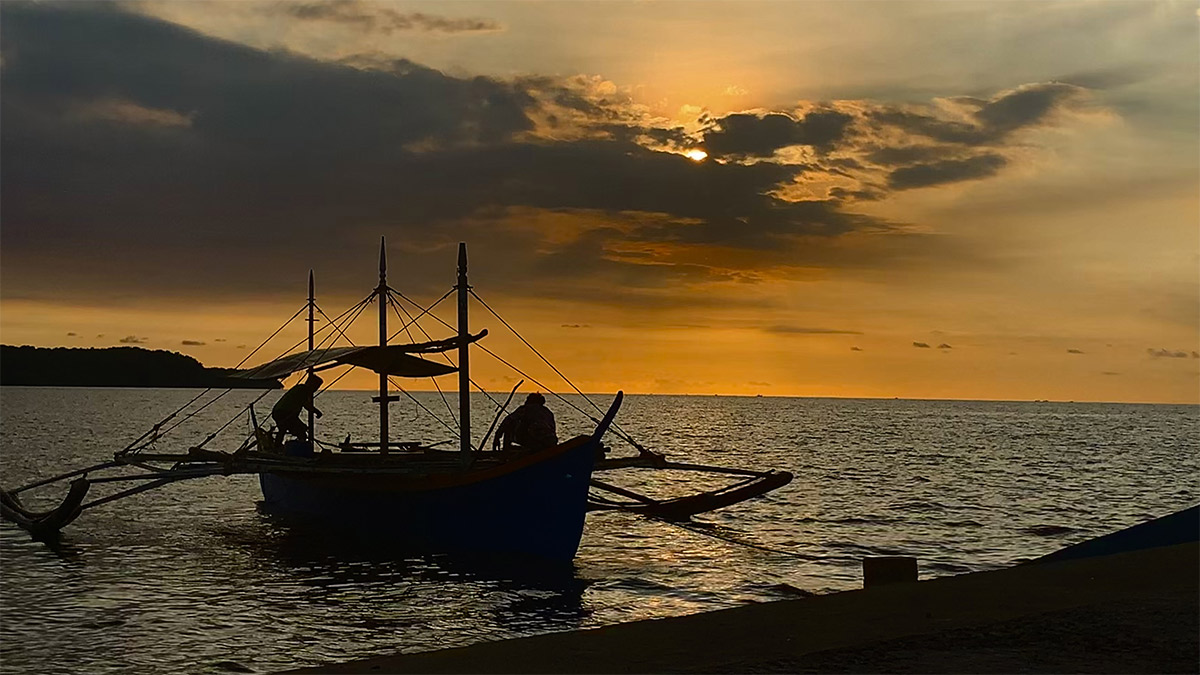
PREPARATION In this photo taken on May 24, fishermen in Masinloc, Zambales, are making the most of the remaining days before the onset of the rainy season, which may come in the next few days, according to Pagasa. —Joanna Rose Aglibot
SAN ANTONIO, ZAMBALES, Philippines — Aside from the continuing presence of Chinese coast guard vessels in their traditional fishing grounds in the West Philippine Sea, small-scale fishermen in this province are also bracing for the impact of the northeast monsoon on their source of livelihood and other economic activities.
Also known in coastal communities as “sigwada,” the northeast monsoon forces fishermen from various municipalities in the province to suspend their operations due to large waves and strong winds. This phenomenon occurs from the last week of May to August.
READ: Zambales fishers lament China Coast Guard’s bullying in Scarborough
According to fishermen, it would be unsafe to venture into the sea because of the danger of strong waves and wind.
“This meant more than three months of famine among the fishermen and other poor people along the coast,” Joey Marabe, provincial coordinator of fisherfolk group Pamalakaya, told the Inquirer in an interview on Monday.
He noted that in recent years, fishermen have been left without a livelihood and received little support from the government during the rainy season.
A small fishing boat with two to four fishermen spends at least P500 for gas and other expenses every fishing trip within the municipal waters and could earn from P1,000 to P1,500, depending on the market price of their freshly caught fish.
‘Negligence’
“While no one wants to suffer from the effects of sigwada, it is criminal negligence for the government to do nothing during this period of calamity,” Marabe said.
He said that despite the disaster and emergency funds available to the relevant government agencies, the most vulnerable sectors, such as the fishermen, were not receiving sufficient support.
Ronnel Arambulo, Pamalakaya vice chair, said a P1-billion fund from the Department of Agriculture’s quick-response fund is available annually to mitigate the effects of disasters on the agrifisheries sector.
He said they have already started to coordinate with coastal communities across the country to monitor the potential impacts of sigwada and ultimately mobilize the fisherfolk to seek sufficient economic support and other forms of aid from the government.
“We are starting to conduct consultations with the fishing communities with the aim of insisting on the economic and livelihood support they deserve not only in the province of Zambales but also in different parts of the country where the disaster of the monsoon is expected,” said Arambulo in a separate interview.
In a statement on Sunday, Gov. Hermogenes Ebdane Jr. said the provincial government has short- and long-term programs in place to address the needs of local fishermen and has set the stage for sustainable fishing by putting up millions of pesos in funds for fisherfolk to go into “payao” fishing, a system that uses fish aggregating devices in open sea.